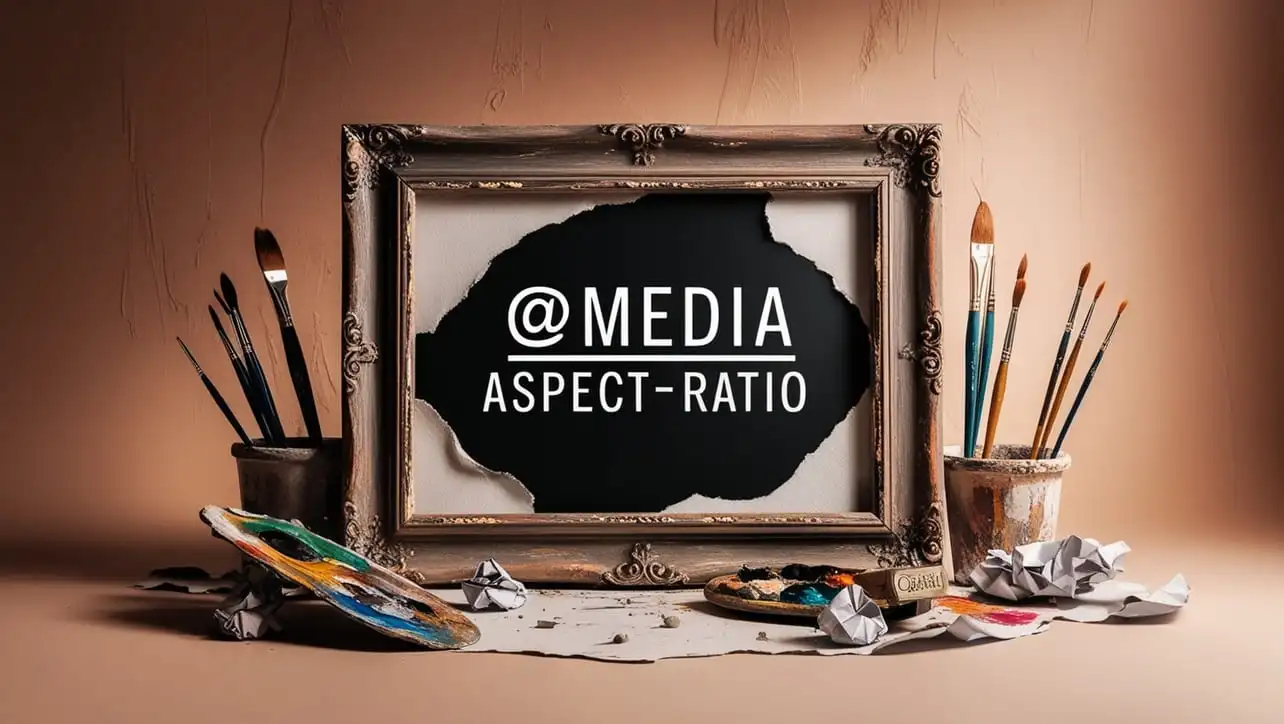
CSS @media aspect-ratio Property

Photo Credit to CodeToFun
🙋 Introduction
The @media rule in CSS allows developers to apply styles depending on certain conditions, such as the width, height, or aspect ratio of the viewport.
The aspect-ratio media feature allows you to target specific aspect ratios of the viewport or device, helping you create responsive designs that adapt well to different screen sizes and orientations.
This feature is particularly useful for ensuring that elements maintain their aspect ratio across devices with varying resolutions, like desktops, tablets, or smartphones.
💡 Syntax
The aspect-ratio media feature is typically used within a @media query. The syntax allows you to define a specific aspect ratio or a range of aspect ratios to apply the relevant styles.
@media (aspect-ratio: width/height) {
/* CSS rules */
}You can also use comparison operators like min-aspect-ratio and max-aspect-ratio to target ranges of aspect ratios.
@media (min-aspect-ratio: width/height) {
/* CSS rules */
}
@media (max-aspect-ratio: width/height) {
/* CSS rules */
}🏠 Property Values
- exact ratio: Specifies an exact aspect ratio in the format width/height, like 16/9 or 4/3.
- min-aspect-ratio: Defines a minimum aspect ratio for applying styles, ensuring that the styles are applied only when the viewport’s aspect ratio is equal to or greater than the specified value.
- max-aspect-ratio: Defines a maximum aspect ratio for applying styles, ensuring that the styles are applied only when the viewport’s aspect ratio is equal to or less than the specified value.
🎛️ Default Value
There is no default value for the aspect-ratio media feature because it is always dependent on the current device or viewport's aspect ratio.
📝 Example Usage
📜 Basic Usage
In this example, the background color will change when the viewport has an aspect ratio of exactly 16:9.
<!DOCTYPE html>
<html lang="en">
<head>
<meta charset="UTF-8">
<meta name="viewport" content="width=device-width, initial-scale=1.0">
<title>@media aspect-ratio Example</title>
<style>
body {
background-color: lightblue;
}
@media (aspect-ratio: 16/9) {
body {
background-color: lightgreen;
}
}
</style>
</head>
<body>
<h1>Resize the Window to See the Effect</h1>
<p>When the aspect ratio is 16:9, the background color will change to light green.</p>
</body>
</html>📜 Example 2: Using min-aspect-ratio
This example applies styles when the viewport’s aspect ratio is at least 4:3.
@media (min-aspect-ratio: 4/3) {
body {
background-color: pink;
}
}🖥️ Browser Compatibility
The aspect-ratio media feature is supported by most modern browsers, including Chrome, Firefox, Safari, Edge, and Opera. Ensure that you test your designs across different devices and screen sizes to verify that the aspect ratio-based media queries work as intended.
🎉 Conclusion
The @media aspect-ratio property is a useful tool in responsive design, allowing developers to fine-tune their websites based on the device's screen proportions. This helps maintain consistency across different aspect ratios, ensuring that your website looks great on a variety of devices. Incorporating aspect ratio media queries can improve the overall adaptability and user experience of your web projects.
👨💻 Join our Community:
Author

For over eight years, I worked as a full-stack web developer. Now, I have chosen my profession as a full-time blogger at codetofun.com.
Buy me a coffee to make codetofun.com free for everyone.
Buy me a Coffee












If you have any doubts regarding this article (CSS @media aspect-ratio Property), please comment here. I will help you immediately.